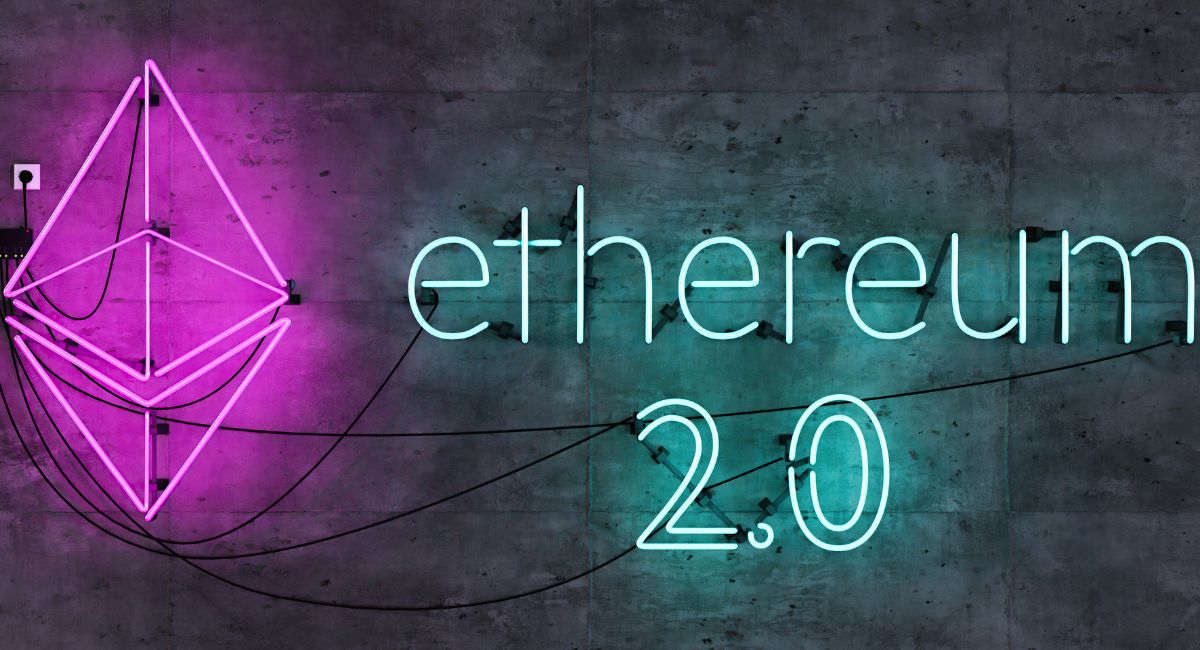How To Participate In Ethereum 2.0’s Validator Network By Staking ETH
Ethereum, the second-largest blockchain by market capitalization, has undergone a transformative upgrade with the introduction of Ethereum 2.0. One of the key features of this upgrade is the shift from a Proof of Work (PoW) to a Proof of Stake (PoS) consensus mechanism. This transition has brought about significant changes to the Ethereum network, including the opportunity for users to participate in staking ETH, a process that not only secures the network but also offers the potential for passive income. In this comprehensive guide, we will explore what staking ETH is, why it’s important, and how you can participate in Ethereum 2.0’s validator network.
Understanding Staking ETH: The Basics

Staking ETH is a fundamental component of Ethereum 2.0’s PoS consensus mechanism. But what exactly is staking, and why is it crucial for the network’s operation?
At its core, staking involves participants, known as validators, locking up a certain amount of cryptocurrency (in this case, ETH) as collateral to validate transactions and create new blocks on the blockchain. Validators are chosen to propose and attest to blocks based on the amount of ETH they have staked and the overall network’s health.
Here’s a breakdown of the key elements of staking ETH:
- Validators: Validators are individuals or entities that participate in the Ethereum network by staking ETH. They play a vital role in validating transactions, ensuring the security of the network, and proposing new blocks. Validators are rewarded for their efforts.
- Staking: To become a validator, individuals or entities need to stake a specific amount of ETH as collateral. This collateral is used to back their actions and ensure they have a vested interest in maintaining the network’s security.
- Rewards: Validators receive rewards for validating transactions and creating new blocks. These rewards are typically in the form of additional ETH, and they provide an incentive for validators to act honestly and responsibly.
Native Liquid Restaking Tokens – aka 𝐧𝐋𝐑𝐓𝐬 – are set to revolutionize the ETH staking game.
Here’s what you should know about one of the most important narratives of this cycle. 🧵
— Puffer Finance (@puffer_finance) October 25, 2023
The Importance of Staking ETH

Staking ETH is central to Ethereum 2.0’s operation and offers several key benefits:
- Security: Validators play a crucial role in securing the Ethereum network. By staking ETH as collateral, they have a vested interest in the network’s well-being, as they can lose their staked ETH if they engage in malicious behavior.
- Decentralization: PoS consensus mechanisms like Ethereum 2.0 are inherently more decentralized than PoW, as they don’t rely on energy-intensive mining. This makes it easier for a broader range of participants to engage in securing the network.
- Scalability: The move to PoS enhances Ethereum’s scalability by introducing shard chains and parallel processing. This means that the network can handle a more extensive range of transactions and DApps efficiently.
- Sustainability: PoS is known for its energy efficiency compared to PoW. Ethereum 2.0’s energy-conscious approach aligns with global sustainability goals, making it more attractive to environmentally conscious users.
- Passive Income: Staking ETH provides an opportunity for passive income, as validators receive rewards for their participation. This has the potential to attract a more diverse user base interested in growing their crypto holdings.
Also, read – What Is Crypto Staking: Top 10 Reasons Ethereum Network Activity Is Soaring
How to Participate in Ethereum 2.0’s Validator Network

Participating in Ethereum 2.0’s validator network involves several steps and considerations. Validators play a pivotal role in securing the network and validating transactions, and they have the potential to earn rewards in the form of additional ETH. Here’s a detailed guide on how to become a validator in Ethereum 2.0:
1. Acquire Sufficient ETH:
To become a validator in Ethereum 2.0, you need to stake a specific amount of ETH as collateral. At the time of writing, this requirement is often set at 32 ETH, which is referred to as a “validator deposit.” Validators may need to accumulate this amount of ETH if they don’t already possess it. It’s essential to carefully consider your financial situation and risk tolerance before committing a substantial amount of ETH to staking.
2. Set Up a Validator Node:
Validators need to run a software node that actively participates in the Ethereum 2.0 network. To set up a validator node, you’ll need to choose a client software. Popular client options include Prysm, Teku, Nimbus, and Lighthouse. Each client has its own setup instructions, and you can choose the one that best fits your technical expertise and preferences.
Your validator node will be responsible for proposing and attesting to blocks, verifying transactions, and ensuring the network’s security. This requires hardware specifications, server hosting, and specific software configurations.
3. Deposit ETH:
After your validator node is set up, you’ll need to deposit your ETH as collateral for staking. To do this, you’ll interact with the Ethereum 2.0 deposit contract, which is designed to accept validator deposits. The contract will lock up your deposited ETH, and you will be unable to withdraw it until the Ethereum 2.0 network reaches a certain level of maturity, typically referred to as the “genesis event.”
The deposit contract will provide instructions on how to send your ETH, and it’s crucial to follow these instructions carefully to ensure that your deposit is successful.
4. Wait for Activation:
Once you have successfully deposited your ETH and Ethereum 2.0 progresses to the next phase (the “genesis event”), your validator will become active. Validators are chosen to propose and attest to blocks based on the amount of ETH they have staked. The more ETH you have staked, the more frequently you’ll be selected to perform these duties.
It’s important to be patient during this phase, as the Ethereum 2.0 network will activate validators gradually to ensure its stability.
5. Monitor and Maintain:
Being a validator requires active monitoring and maintenance. You should regularly check the status of your validator node to ensure it remains online and functional. Inactive or misbehaving validators may lose some or all of their staked ETH due to slashing. Slashing can occur if you engage in malicious behavior or neglect your responsibilities.
Regular maintenance includes keeping your software up to date, addressing any technical issues that may arise, and verifying your node’s performance. You may also need to participate in network governance decisions and protocol upgrades to adapt to future developments.
6. Stay Informed:
The world of blockchain and Ethereum is dynamic, with ongoing developments, protocol changes, and upgrades. Staying informed about network upgrades and changes in staking protocol is vital. Being unaware of or uninvolved in network developments could lead to unexpected consequences for validators.
Participating in the Ethereum community, joining forums, and following relevant news sources are essential to staying informed and making informed decisions.
In conclusion, becoming a validator in Ethereum 2.0’s network offers an opportunity to contribute to network security and earn rewards through staking. However, it is a complex process that requires technical knowledge, a substantial amount of ETH, and ongoing maintenance. Validators should carefully consider the risks and rewards, be diligent in their setup and maintenance, and stay informed about the evolving Ethereum ecosystem to maximize their chances of success in this exciting phase of blockchain evolution.
Risks and Considerations

While staking ETH can be a rewarding endeavor, it’s not without risks. Validators must be cautious and consider the following:
- Slashing: Validators can lose some or all of their staked ETH if they engage in malicious or careless behavior. This is known as “slashing.”
- Technical Knowledge: Running a validator node requires technical expertise. Validators should be prepared to troubleshoot and maintain their infrastructure.
- Minimum Stake: As mentioned, there’s typically a minimum amount of ETH required to become a validator, which can be significant.
- Volatility: The value of ETH is subject to price fluctuations. Validators should be prepared for potential changes in the value of their staked ETH.
In Conclusion: Staking ETH and the Future of Ethereum

Staking ETH is a pivotal component of Ethereum 2.0’s PoS consensus mechanism, bringing numerous benefits to the network. It enhances security, scalability, and sustainability while providing opportunities for passive income. Participating in Ethereum 2.0’s validator network allows users to play an active role in the network’s operation and contribute to its growth and development.
As Ethereum 2.0 continues to evolve and gain adoption, staking ETH is set to become even more central to the crypto ecosystem. It’s an exciting opportunity for cryptocurrency enthusiasts to be part of the next chapter in the Ethereum journey, furthering the network’s goals of decentralization and sustainability while potentially reaping the rewards of their participation.
FAQs About Staking ETH
1. Is staking my ETH a good idea? Staking ETH can be a good idea for several reasons. It allows you to earn rewards by participating in network security, specifically in Ethereum 2.0’s Proof of Stake (PoS) system. It’s an eco-friendly alternative to mining, as it doesn’t consume substantial amounts of energy. Additionally, staking helps contribute to the overall network’s decentralization and security. However, like any investment, it comes with risks, so it’s essential to do your research and consider your risk tolerance.
2. How much will you earn staking Ethereum? The amount you can earn by staking Ethereum depends on various factors, including the total amount of ETH staked, the network’s activity, and the staking rewards rate. As of my last knowledge update in early 2022, the annual staking rewards for Ethereum 2.0 were estimated to be around 5-8%. Keep in mind that these rates can change, so it’s advisable to check the current rates before staking.
3. Is ETH staking profitable? Staking ETH can be profitable, especially if the rewards outweigh the costs and potential risks. However, profitability depends on several factors, including the amount of ETH you stake, the duration of your staking, and market conditions. It’s important to consider both potential rewards and risks when evaluating the profitability of ETH staking.
4. Why is staking ETH risky? Staking ETH involves certain risks, such as:
- Volatility Risk: The value of ETH can be highly volatile, and staking requires you to lock up your funds for a specific period. If the price of ETH drops significantly during that time, you might face opportunity costs.
- Slashing Risk: Validators in Ethereum 2.0 can be penalized (slashed) for misbehavior, such as going offline or attempting to manipulate the network. This can result in the loss of a portion of your staked ETH.
- Smart Contract and Technical Risks: Staking involves interacting with smart contracts, which can have vulnerabilities. Technical issues or bugs in the Ethereum 2.0 network or your staking setup can result in financial losses.
- Market Risk: Staked ETH is illiquid until you can safely withdraw it. If you need access to your funds in an emergency or during market fluctuations, this lack of liquidity can be problematic.
It’s important to carefully assess these risks and consider your financial situation and risk tolerance before deciding to stake ETH. Diversifying your investments and conducting thorough research are advisable strategies to mitigate some of these risks.
Stay informed with daily updates from Blockchain Magazine on Google News. Click here to follow us and mark as favorite: [Blockchain Magazine on Google News].
Get Blockchain Insights In Inbox
Stay ahead of the curve with expert analysis and market updates.
latest from tech
Disclaimer: Any post shared by a third-party agency are sponsored and Blockchain Magazine has no views on any such posts. The views and opinions expressed in this post are those of the clients and do not necessarily reflect the official policy or position of Blockchain Magazine. The information provided in this post is for informational purposes only and should not be considered as financial, investment, or professional advice. Blockchain Magazine does not endorse or promote any specific products, services, or companies mentioned in this posts. Readers are encouraged to conduct their own research and consult with a qualified professional before making any financial decisions.

 Bitcoin
Bitcoin  Ethereum
Ethereum  Tether
Tether  XRP
XRP  Solana
Solana  Dogecoin
Dogecoin  USDC
USDC  Lido Staked Ether
Lido Staked Ether  Cardano
Cardano  TRON
TRON  Avalanche
Avalanche  Wrapped stETH
Wrapped stETH  Chainlink
Chainlink  Toncoin
Toncoin  Sui
Sui  Wrapped Bitcoin
Wrapped Bitcoin  Shiba Inu
Shiba Inu  Hyperliquid
Hyperliquid  Stellar
Stellar  Polkadot
Polkadot  Hedera
Hedera  WETH
WETH  Bitcoin Cash
Bitcoin Cash  LEO Token
LEO Token  Uniswap
Uniswap  Litecoin
Litecoin  Pepe
Pepe  Wrapped eETH
Wrapped eETH  NEAR Protocol
NEAR Protocol  Ethena USDe
Ethena USDe  USDS
USDS  Aptos
Aptos  Internet Computer
Internet Computer  Aave
Aave  Cronos
Cronos  POL (ex-MATIC)
POL (ex-MATIC)  Ethereum Classic
Ethereum Classic  Mantle
Mantle  Render
Render  WhiteBIT Coin
WhiteBIT Coin  Monero
Monero  Dai
Dai  MANTRA
MANTRA  Bittensor
Bittensor  Artificial Superintelligence Alliance
Artificial Superintelligence Alliance  Arbitrum
Arbitrum  Filecoin
Filecoin 



